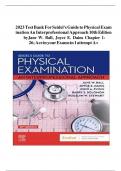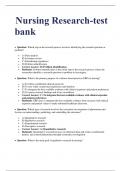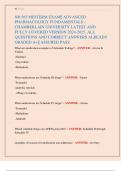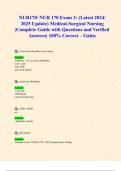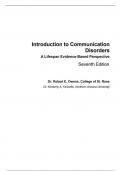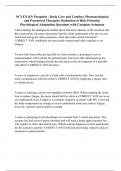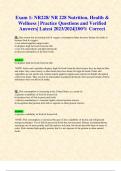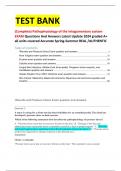Tentamen (uitwerkingen)
TEST BANK For Seidel's Guide to Physical Examination An Interprofessional Approach 10th Edition by Jane W. Ball, Joyce E. Dains, Chapters 1 - 26 | Complete Newest Version
- Vak
- Instelling
- Boek
TEST BANK For Seidel's Guide to Physical Examination An Interprofessional Approach 10th Edition by Jane W. Ball, Joyce E. Dains, Chapters 1 - 26 | Complete Newest Version
[Meer zien]
